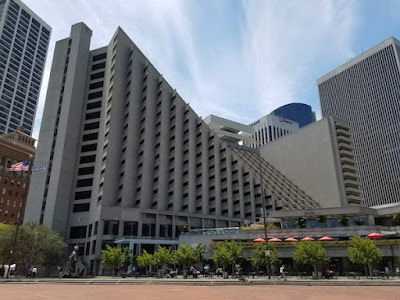Big, Fancy, and Junk Space?
When people go on trips, a fancy hotel can be a luxury,
sought after and coveted. They are supposed to make your trip that much better
with all the amenities and pretty things. Take a look at those hotels though
and ask yourself, what are they contributing to architecture? The old, historic
hotels allow people to take a trip back in time with modern luxuries and I
think that is a great way to preserve beautiful architecture. However, so many new
hotels are modern volumes rising into the skies of our cities and disrupting
the urban flow with their inward focused expanses that aim to offer anything
you need without leaving. For example, John Portman’s Hyatt in San Francisco,
California. The lobby is a beautiful space to walk into; the soaring height
lets in natural light and the geometric form created makes it somewhere I want
to stay a while. When I was there on my visit to San Francisco I was amazed by
all the things to do inside and all the places to go. Outside though, the
behemoth of a building is not something people wanted to interact with unless
they were going there. I observed people walking to the opposite side of the street
and avoiding it even though it was along the main thoroughfare to the Ferry
Building. So is this building junk space? Do all the functions inside give
enough value to discount people’s discomfort outside? I initially would not
have labeled it as junk space because I was so taken with the interior, but
architecture is not just for those that enter the building – it impacts
everyone that sees it and walks by it.
Exterior of the Hyatt, San Francisco (https://singleflyer.com)
Interior lobby space of the Hyatt, San Francisco (portmanholdings.com)




When we discussed this project in class, I found the interior quite fascinating. The place created and the scale of it is very interesting. I agree with you about the exterior though, it is obvious the exterior world is second to the interior.
ReplyDeleteI think you made an interesting point about the relationship between interior and exterior. I feel like it has a similar effect to that of shopping malls by creating this "ideal" city street that actually ignore the real city and urban life surrounding it. Can we blur the boundaries between interior and exterior or does one always have to take priority?
ReplyDelete